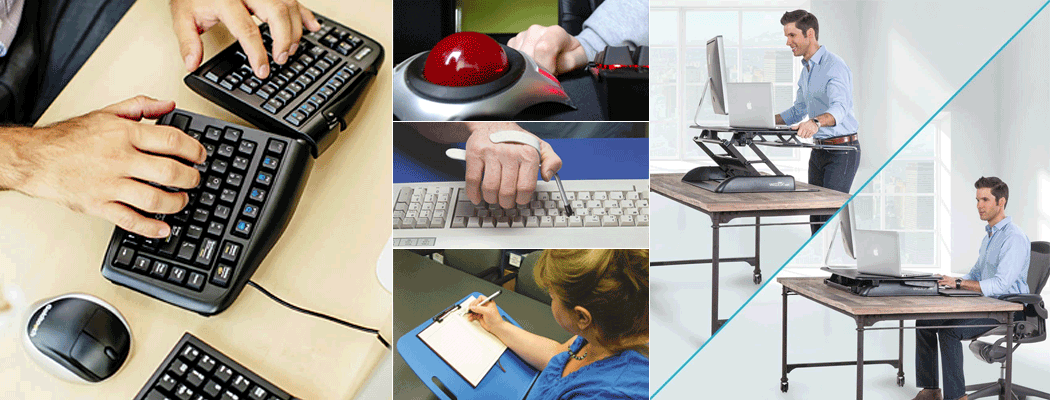What is is Seating, Positioning, & Mobility Assistive Technology? Examples of mobility devices include canes, walkers, crutches, orthotics & prosthetics, wheelchairs, scooters and power chairs. Seating and positioning devices are used for reasons such as improving postural control & deformity management, pressure & postural management, and/or comfort & postural accommodation.
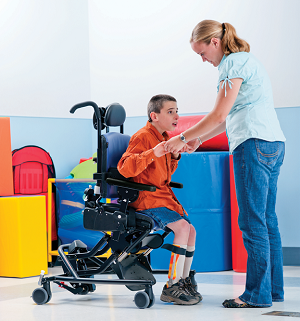 When and where do I need to use them? Seating, Positioning, and Mobility devices may be needed at any time and in any place.
When and where do I need to use them? Seating, Positioning, and Mobility devices may be needed at any time and in any place.
Who needs Seating, Positioning, and Mobility AT? Seating, Positioning, and Mobility AT is important for people with disabilities who need assistance to achieve and/or maintain a position that enables them to participate in daily activities. It is important for anyone that has difficulty maintaining a functional seating position that allows purposeful movement It is important for anyone who has difficulty moving from one area to another area.
Why is Seating, Positioning, and Mobility AT important? By providing a functional seating position, AT can reduce or eliminate the need for human assistance for daily activities. It can reduce fatigue thereby allowing the person to participate for longer periods of time and save energy for other tasks. Devices that aid in mobility allow a person to transition from one place to another to participate in daily activities. Someone with limited mobility may not even be able to leave his bed in the mornings without a device for support and safety.
Resources for Seating, Positioning & Mobility
AT3 Center Videos on Seating, Positioning & Mobility
EasterSeals Crossroads -
INDATAProject TechTip Videos
Easter Seals Crossroads has been providing assistive technology solutions in Indiana since 1979. In 2007, Easter Seals Crossroads partnered with the State of Indiana, Bureau of Rehabilitative Services to establish the Indiana Assistive Technology Act (INDATA) Project. The INDATA Project offers excellent videos and Podcasts that provide timely updates on new assistive technology.
Here's INDATA's YouTube video playlist for Mobility.
INDATA also offers three Podcasts that you can listen to, or subscribe to, on this page. At the top right of any of these pages you can search for a specific disability category.
The AT3Center.net wishes to thank the INDATA Project for their expertise and excellence in advancing access and awareness of assistive technology.
Information on this page addresses Assistive Technology for Seating, Positioning & Mobility in...
EDUCATION | EMPLOYMENT | COMMUNITY LIVING
(click the titles above to jump to the content area)
EDUCATION
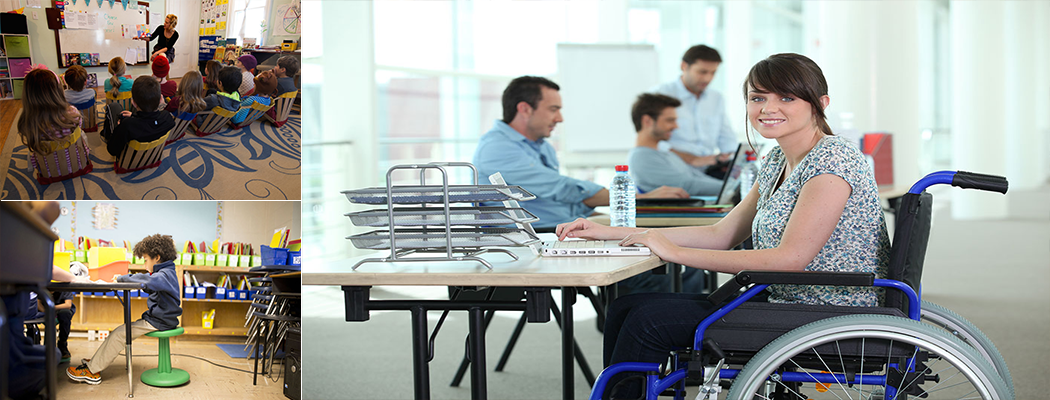
Talking Points for Seating, Positioning, and Mobility Assistive Technology in Education
The need for seating, positioning, and mobility devices is often medical in nature and often must be customized to a patient. Therefore the need for these devices is typically addressed using a medical model, rather than the education model, through the person’s physician, private therapists, and insurance/Medicaid.
However, there are instances at school when seating and positioning devices can assist in postural support, pressure management, positioning of other devices, and even attention to task! Assistive technology is available in all of these situations.
The category of Education encompasses children - young and old - who are participating as a student whether at the pre-school, elementary, middle/junior/high school levels as well as institutions for higher education. The following talking points are most applicable to students grades preschool through high school.
For children transitioning into the public school at age 3 - To ensure successful AT transitions for children turning 3 years old, it is important for any AT the child is currently using or may need to use in school, whether written into the child's Individualized Family Service Plan (IFSP) or not, be incorporated into the child's Individualized Education Program (IEP). You'll find this information in the Community section below.
For students transitioning into the community or employment settings upon high school graduation - To ensure successful AT transitions for students aging out of school services, it is important for any AT the student is currently using or may need to pursue employment outcomes, whether written into the child's Individualized Education Program (IEP) or not, be incorporated into the student's Individualized Plan for Employment (IPE). IPEs are developed through collaboration with the state vocational rehabilitation agency using a Vocational Rehabilitation (VR) Counselor. You'll find this information in the Employment section below.
Situations where a child might need assistive technology for seating, positioning & mobility:
School Environment
- Seating in classrooms
- Seating in cafeteria
- Mobility in P.E.
- Mobility within the school
Socialization
- Meeting with friends
- Sports coaching
- Music, games, TV
- Groups and club activities
Family / Home Environment
- Seating at dining table
- Seating with family in other rooms
- Mobility from room to room
Community
- Seating at restaurants
- Seating at sports events
- Seating at church
- Seating at movie theater
- Mobility in all community settings
Solutions for Students with Seating, Positioning & Mobility Disabilities
(click to open the accordions below)
| Helpful Links & PDF Resources |
|---|
| American Physical Therapy Association |
| Assessing Students' Needs for Assistive Technology – Seating, Positioning & Mobility |
Talking Points for Seating, Positioning & Mobility in Employment
The category of Employment encompasses those people of working-age who are currently employed or who are seeking employment. The following talking points may be applicable to individuals with disabilities as well as employers. When matching a person to a piece of assistive technology, one can use the Human Activity Assistive Technology (HAAT) model. This model has been used below in the sample case studies.
For students transitioning into the community or employment settings upon high school graduation - To ensure successful AT transitions for students aging out of school services, it is important for any AT the student is currently using or may need to pursue employment outcomes, whether written into the child's Individualized Education Program (IEP) or not, be incorporated into the student's Individualized Plan for Employment (IPE). IPEs are developed through collaboration with the state vocational rehabilitation agency using a Vocational Rehabilitation (VR) Counselor.
Situations where an Individual Might Need AT for Seating, Positioning & Mobility
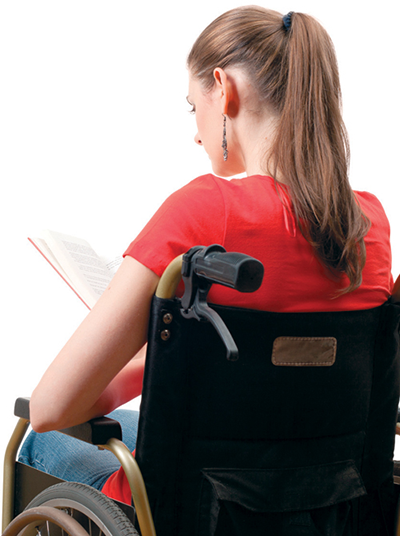 Challenges
Challenges
Some people with disabilities need assistance to achieve and/or maintain a position that enables them to participate in daily activities. They may have difficulty maintaining a functional seating position that allows purposeful movement without undue fatigue. They may have difficulty moving between areas to change tasks/activities. Because these challenges typically occur across all areas of an individual’s life, they are often addressed, on some level, through the person’s physician, private therapists, and insurance/Medicaid.
However, the need for assistive technology and modifications to the work environment must be considered for each person with a disability despite the equipment they may or may not already have.
Benefits
Proper seating and positioning provides appropriate support for work tasks for various reasons:
- Providing postural support/control can reduce fatigue and increase ability to work efficiently and effectively for longer periods of time.
- Reducing risk of pressure sores which poses subsequent health risks and time off work.
- Increasing comfort results in improved function Providing for mobility within the work places reduces the need to rearrange the work environment, increases self-efficacy and mood by allowing for changes, and improves employee comradery by allowing for interactions throughout the workplace.
Modifications
Some people will need modifications to their work environment despite the availability and use of assistive technology. These modifications may include structural changes to doorways and the approach to the building as well as restrooms and breakrooms. Modifications may also include changes to the layout of the area such as locations of desks, file cabinets, telephones, etc., to modify the workflow.
Commonly Asked Questions for an Individual Who Has Seating, Positioning & Mobility Needs
Q - What laws allow me to ask my employer for assistive technology?
A - There are several laws that require employers to accommodate and provide assistive technology as a reasonable accommodation, including the Americans with Disability Act and Section 504 of the Rehabilitation Act.
Q - I am a qualified person with a disability under the ADA. I need assistive technology to do my job. May I ask my employer to provide it?
A - Yes. The ADA says that one of the ways your employer can provide a reasonable accommodation to you is by providing new equipment or modifying existing office equipment or assistive technology to perform the essential functions of your job (core duties). 29 C.F.R. § 1630.2(o)(2)(ii). On the other hand, tasks that are marginal (non-essential functions) to the work you do, do not require that your employer provide you with a reasonable accommodation. 29 C.F.R. 1630(n)(1). Your request must not impose an undue hardship on the employer. 29 C.F.R. §§ 1630.2(p), 1630.15(d).
Q - When can I ask for an assistive device?
A - Your right to assistive technology is available at all stages of a job including application and employment. 29 C.F.R. § 1630.2(o)(1).
Q - What types of assistive technology can I ask for?
A - The ADA does not limit the type of equipment you can ask for. Anything that helps you do your work may be a reasonable accommodation. It may be a simple tool such as a one-handed typewriter for a person who can only use one hand or a high-tech device such as specially manufactured communication equipment that allows a person with a speech impairment to communicate.
Q - What do I need to do to get the right assistive device for work?
A - The process begins with letting your employer know that you have a disability and need an assistive technology to do your work. Next, you should ask for a meeting to discuss your specific needs. If you or your employer know enough about assistive technology, you can agree upon what meets your needs. You should document the contents of your discussion and the terms of your agreement.
Your employer is not required to purchase the most expensive or the most recently developed equipment. In fact, your employer does not have to purchase anything if your needs can be met some other way. Your employer cannot rely on the cost of an item as a reason to do nothing unless there are no other alternatives and the employer can show the cost will be an undue hardship. Instead, when one option is ruled out, the employer should consider other reasonable alternatives. If there is no reasonable choice because devices are all too costly for example, you should be given the chance to provide it yourself.
Q - What can I do if my employer denies my request for assistive technology?
A - You may file a complaint with an agency and a lawsuit in court. In most situations you must file a complaint first before you can go to court.
Solutions for Individuals with Seating, Positioning & Mobility Needs
(click to open the accordions below)
| Helpful Links & PDF Resources |
|---|
| American Physical Therapy Association |
| AskJan.org |
| AskJan.org ADA Library |
| Video Resources |
|---|
Talking Points for Assistive Technology for Seating, Positioning & Mobility in Community Living
The category of Community Living encompasses infants and toddlers who are under the age of 3 and not yet in school, those people who were born with or have acquired an injury and are otherwise participating in community activities (not as students or employees) as well as those who are aging in the home. The following talking points are applicable to individuals with disabilities as well as family members and others providing support and care to these individuals with disabilities.
Sometimes an individual will make it to adulthood and have the necessary assistive technology to participate in the community and at home. When that is the case, these pages will show other considerations regarding accessibility and accommodations. When the person requires additional tools to participate, the Human Activity Assistive Technology (HAAT) model will be used to show how an individual might best match up with a piece of AT to be used in the community and at home
For those children transitioning into the public school at age 3 - To ensure successful AT transitions for children turning 3 years old, it is important for any AT the child is currently using or may need to use in school, whether written into the child's Individual Family Service Plan (IFSP) or not, be incorporated into the child's Individualized Education Program (IEP).
Link to Education section
Situations where an individual might need assistive technology for Seating, Positioning & Mobility in the Community
Socialization
- Lunches
- Social media
- Telecommunication
Community
- Doctor's office visits
- Hospital
- Shopping
- Transportation to, and from, events
- Volunteer activities
- Entertainment
- Sports
- Library
Family/Home Environment
- Talking on the phone
- Paying bills
- TV/Radio
- Doing chores
- Games
- Computer tasks/games


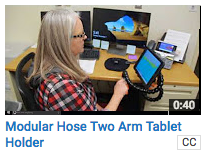

 on the floor with hips back in the chair and hips and knees flexed at a 90 degree angle.
on the floor with hips back in the chair and hips and knees flexed at a 90 degree angle.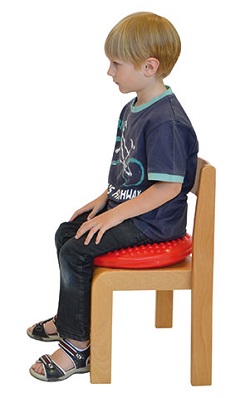
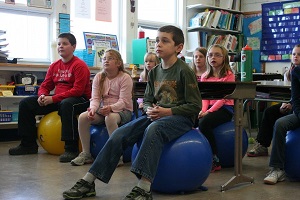 al options to determine which concept is most helpful is important.
al options to determine which concept is most helpful is important.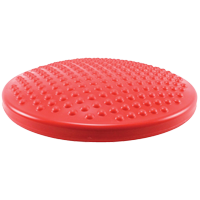
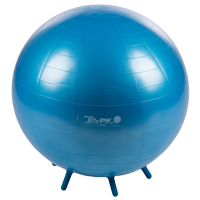


 r positioning for her body as well as positioning devices for school tools such as iPad/tablet and computer. Using positioning wedges to keep her hips, knees, and ankles at less than 90 degrees will help manage her high muscle tone. A wheelchair that tilts can also be helpful. To position a device within her reach and be stable the school could use a Modular hose tablet holder or a Mount-N-Mover.
r positioning for her body as well as positioning devices for school tools such as iPad/tablet and computer. Using positioning wedges to keep her hips, knees, and ankles at less than 90 degrees will help manage her high muscle tone. A wheelchair that tilts can also be helpful. To position a device within her reach and be stable the school could use a Modular hose tablet holder or a Mount-N-Mover.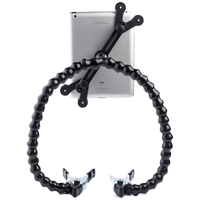
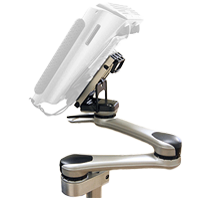
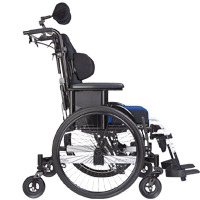


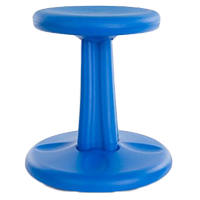


 Person with paraplegia applying to work as bank teller.
Person with paraplegia applying to work as bank teller. Person with spina bifida hired to work as stocker in grocery store.
Person with spina bifida hired to work as stocker in grocery store.